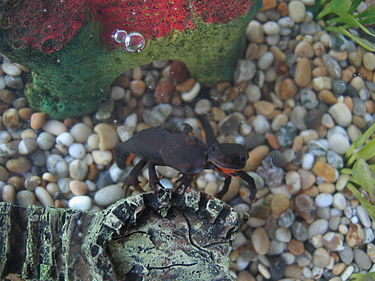Type the name of the breed you're looking for below
[wpdreams_ajaxsearchlite] Don't see the breed your're looking for? Click here and let us know!
Chinese Fire Bellied Newt
| Place of Origin and Range | Throughout China. Local peasants believed they had the power to bring rain. |
| Description | They are typically brown to black above, often with red specks or spots, and orange to crimson below, usually with a blotched, darker pattern. Males can be distinguished from females by their swollen cloacae, and male newts of this species will often assume a blue iridescent sheen and smoother skin during the breeding season. |
| Adult Size | Can grow up to 5 in (12.5 cm) |
| Accommodation | A semi-aquatic, gently filtered aquarium with live plants, with or without large gravel will suffice. |
| Lifespan | Can live up to 25 years |
| Feeding / Diet | Newts eat worms, insects, wax worms, crickets, and some pelleted fish foods are accepted. |
| Other Considerations | Chinese fire belly newts are mildly poisonous and excrete toxins through their skin. Consisting primarily of tetrodotoxins, newts of the genus Cynops pose a medically significant threat if enough toxins are consumed. |



